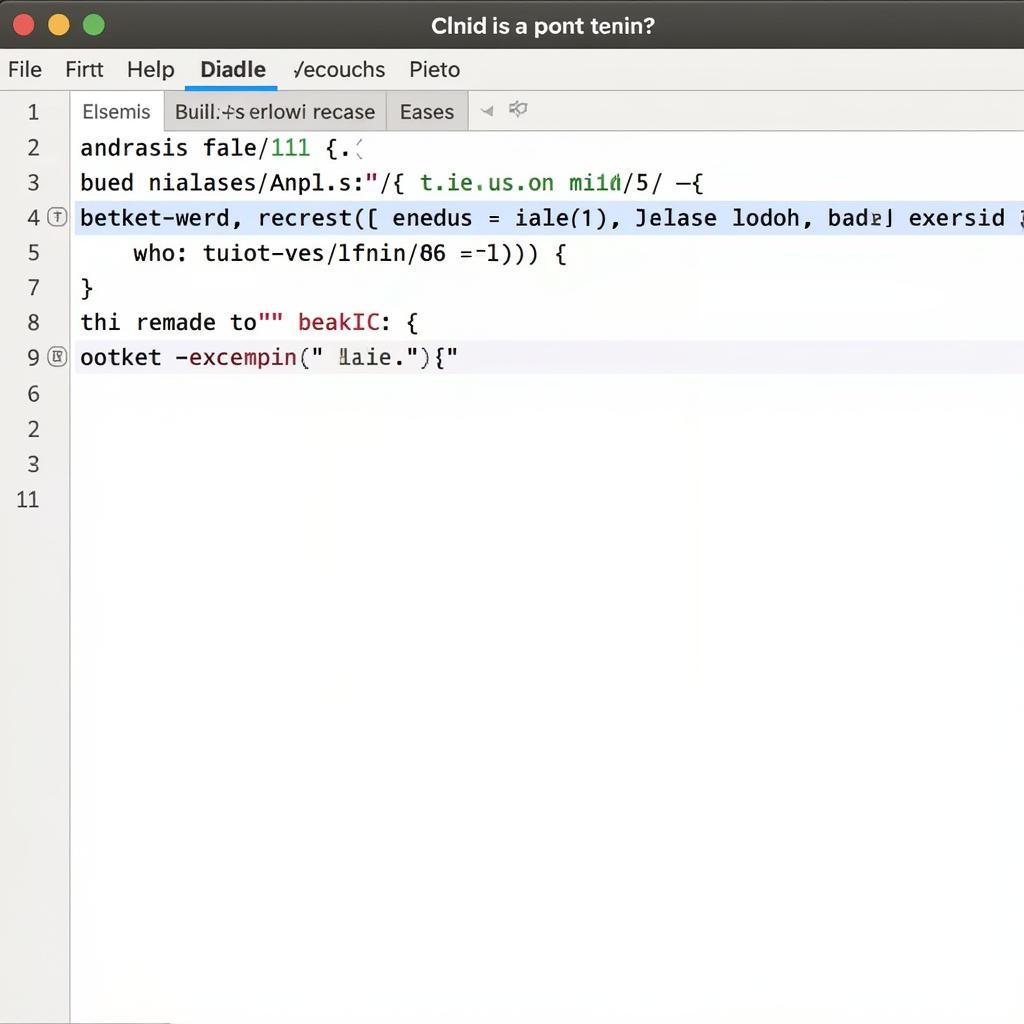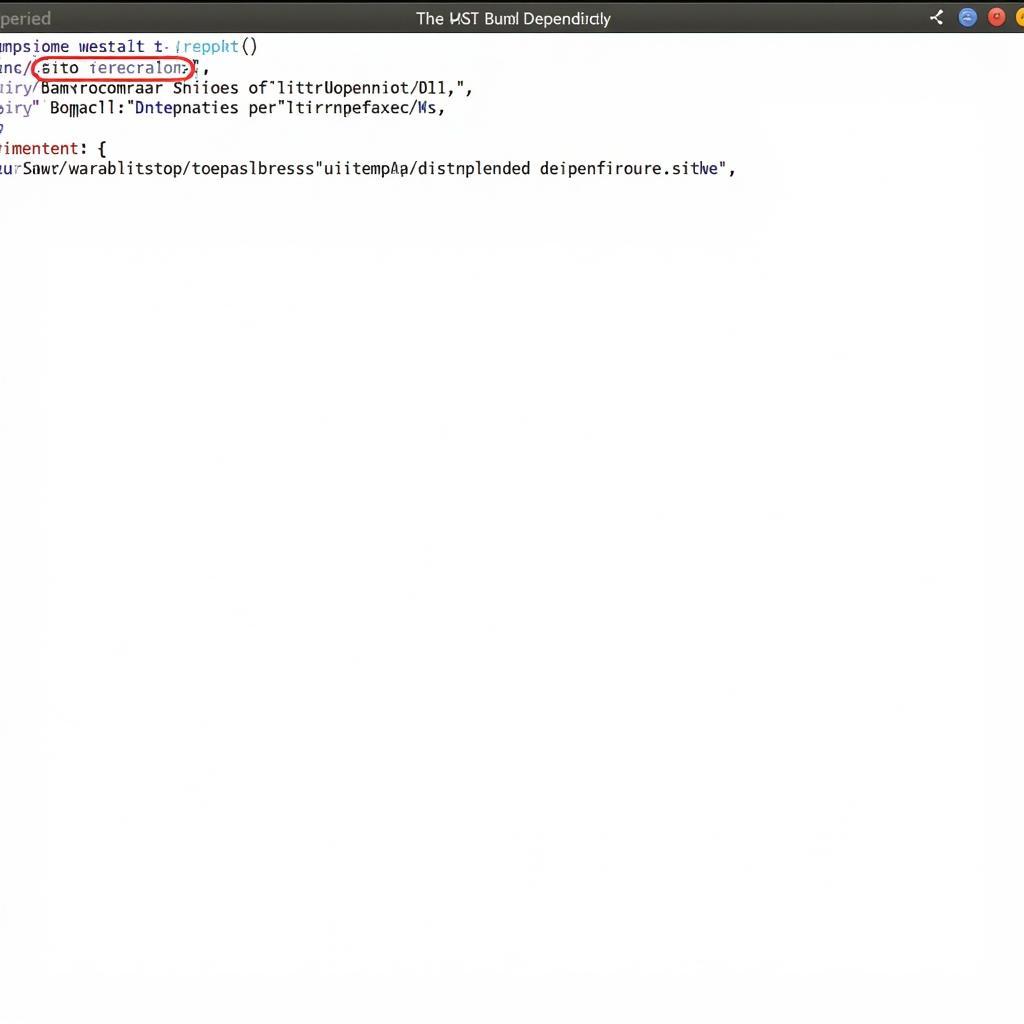Building an Android Package Kit (APK) is the final step in bringing your Android application to life. This guide will walk you through the process of building an APK in Android Studio, from the basics to more advanced techniques. We’ll cover different build variants, signing options, and troubleshooting common issues.
Understanding APKs and Their Importance
An APK is essentially the installation file for your Android app. It contains everything needed to run your application on a device, including code, resources, assets, and the manifest file. Understanding how to build an APK correctly is crucial for distributing your app, whether through the Google Play Store or other means.
Setting Up Your Project for APK Generation
Before building your APK, ensure your project is set up correctly in Android Studio. This includes configuring your build.gradle files, setting up your signing configurations, and ensuring all dependencies are correctly resolved.
Configuring Build Variants
Build variants allow you to create different versions of your app, such as debug, release, or versions tailored for specific devices. Defining these variants gives you granular control over the final APK output.
Setting up Signing Configurations
Signing your APK is a critical security measure. It verifies the authenticity of your app and prevents tampering. You’ll need to create a keystore file and configure your project to use it for signing release builds.
 Configuring Signing Settings in Android Studio
Configuring Signing Settings in Android Studio
Building Your APK in Android Studio
There are multiple ways to build an APK within Android Studio, each catering to different needs.
Generating a Debug APK
Debug APKs are used for testing and development. They are not optimized for performance and include debugging information. Generating a debug APK is typically faster and simpler than a release build.
Generating a Release APK
Release APKs are optimized for performance and size. They are signed with your private key and ready for distribution. The process involves several steps, including code shrinking, obfuscation, and optimization.
Building an APK from the Menu
You can generate an APK by navigating through the Build menu in Android Studio. This provides a simple interface for selecting the build variant and generating the APK.
Building an APK using Gradle Commands
The command-line interface provides more flexibility and control over the build process. You can use Gradle commands to build specific variants or customize the build process in more detail.
 Building APK Using Gradle Commands
Building APK Using Gradle Commands
Exploring Advanced Build Options
Beyond the standard build process, Android Studio offers advanced options for customizing your APK generation.
Code Shrinking and Obfuscation
These techniques reduce the size of your APK and make it more difficult to reverse engineer. ProGuard is a commonly used tool for code shrinking and obfuscation.
Optimizing APK Size
Reducing the size of your APK is important for download speeds and storage space on user devices. Various techniques, including resource optimization and removing unused code, can help achieve this.
Troubleshooting Common APK Build Issues
Encountering build errors is a common part of the development process. Here are some common issues and their solutions:
- Keystore Errors: Ensure your keystore file is correctly configured and accessible.
- Dependency Conflicts: Resolve any conflicts between library dependencies.
- Manifest Errors: Double-check your manifest file for any errors or missing information.
 Troubleshooting Common APK Build Issues in Android Studio
Troubleshooting Common APK Build Issues in Android Studio
Conclusion
Building an APK in Android Studio is a fundamental skill for any Android developer. Understanding the different build variants, signing options, and troubleshooting techniques will streamline your development workflow and ensure you create high-quality, distributable applications. By following the steps outlined in this guide, you’ll be well-equipped to build and deploy your Android apps effectively.
FAQ
- What is the difference between a debug and release APK?
- How do I create a keystore file?
- What is ProGuard and how does it work?
- How can I reduce the size of my APK?
- What are some common APK build errors and how can I fix them?
- Where can I find more information about building APKs in Android Studio?
- What is the significance of signing an APK?
Suggested Further Reading
- Check out our article on optimizing your Android app for performance.
- Learn more about advanced Gradle configurations for Android.
Need assistance? Contact us at Phone Number: 0977693168, Email: [email protected] or visit our address at 219 Đồng Đăng, Việt Hưng, Hạ Long, Quảng Ninh 200000, Việt Nam. We have a 24/7 customer support team.